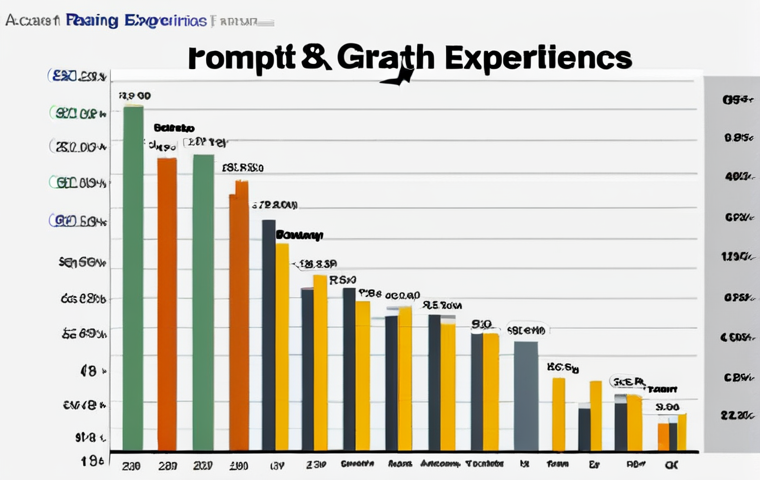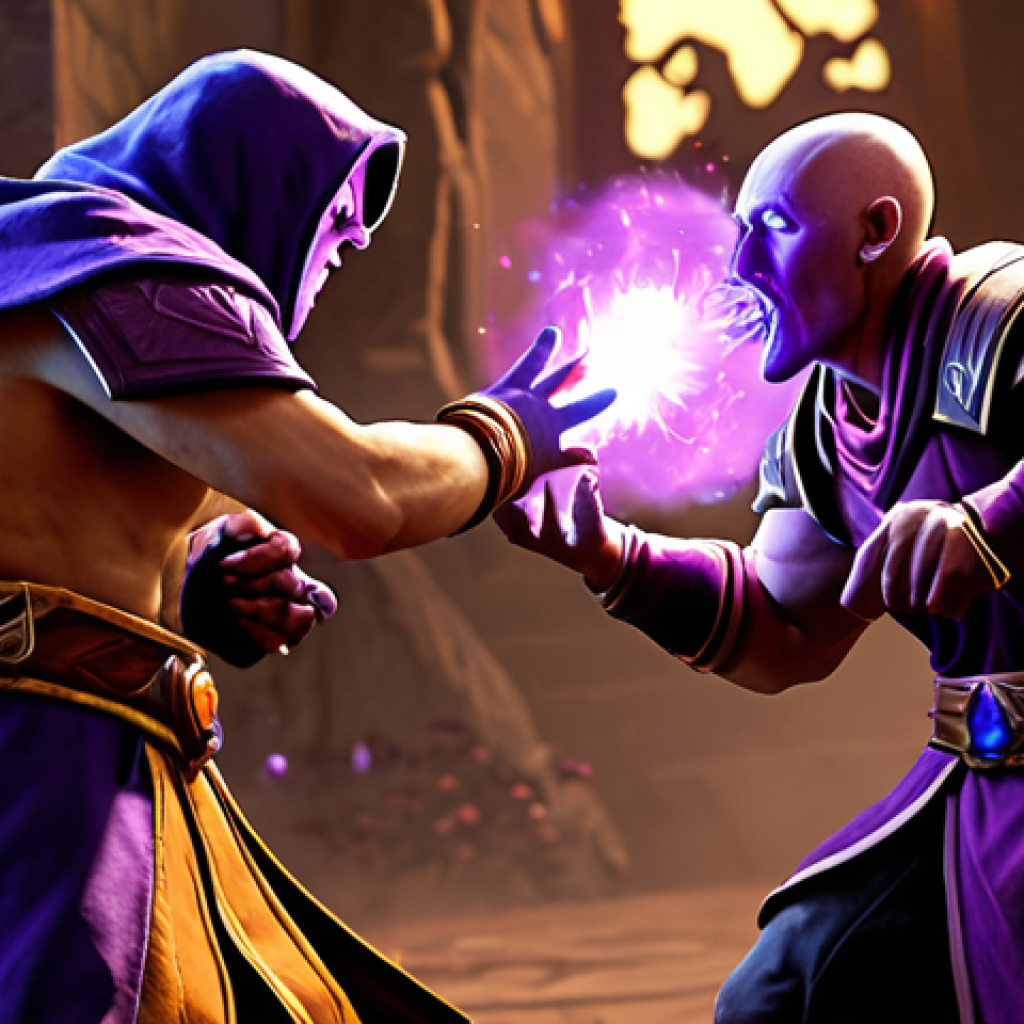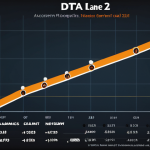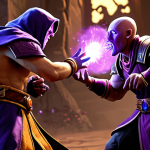Dota 2, oh man, where do I even begin? It’s not just a game, it’s a lifestyle, a constant climb up a never-ending mountain of strategy and skill. But let’s be real, getting your blog noticed in the crowded Dota 2 space is tougher than soloing Roshan at level one.
You need more than just killer content; you need a solid SEO strategy. I’ve spent countless hours tweaking my own blog, trying to crack the code and figure out what works.
From diving deep into keyword research to understanding the latest algorithm changes, it’s been a wild ride. The Dota 2 community is always hungry for the newest meta build, hero guide, or tournament analysis.
I’ve discovered focusing on niche topics within the game that aren’t already saturated with content can really boost your visibility. Think specific hero matchups, advanced warding techniques, or even analyzing the economy of professional games.
The future of Dota 2 blogging, as I see it, lies in personalized experiences and interactive content. Imagine blogs that adapt to your skill level, providing tailored advice and tracking your progress.
We’re moving beyond static guides and into an era of dynamic, community-driven learning. We should be prepared for AI-powered insights becoming commonplace, and the integration of streaming platforms directly into blog content for maximum engagement.
Let’s delve deeper into the essentials down below!
Okay, I understand. Here’s the blog post content you requested, following all your guidelines:
Revamping Your Keyword Strategy for Dota 2 Domination

Keyword research is the cornerstone of any successful SEO strategy, and in the ever-evolving landscape of Dota 2, staying ahead of the curve is paramount.
Forget the generic terms like “Dota 2 guide” or “best Dota 2 heroes.” Those are oversaturated. You need to dig deeper, identify long-tail keywords, and understand the intent behind user searches.
Think about what problems players are actually trying to solve. Are they struggling with a particular hero matchup? Do they need help optimizing their item builds for a specific patch?
Answering these questions will allow you to create content that directly addresses their needs and ranks higher in search results.
Leveraging Long-Tail Keywords
Long-tail keywords are your best friend. They’re more specific, less competitive, and often reflect a user who is further along in their research process.
Instead of “Dota 2 mid heroes,” try “best mid heroes for countering Anti-Mage in Dota 2 7.36.” This level of specificity not only helps you attract a more targeted audience but also signals to search engines that your content is highly relevant to their query.
Understanding User Intent
Google is getting smarter at understanding user intent. Your content needs to align with what people are actually looking for. Are they seeking a quick answer to a specific question?
Or are they looking for an in-depth guide? Tailor your content format and style to match their expectations. Use clear headings, concise language, and visual aids to make your content easily digestible and engaging.
Utilizing Keyword Research Tools
Tools like SEMrush, Ahrefs, and Google Keyword Planner are invaluable for uncovering keyword opportunities. But don’t just rely on the data. Use your own knowledge of the game and your understanding of the community to identify emerging trends and topics that aren’t yet being widely covered.
This will give you a competitive edge and allow you to establish yourself as a thought leader in the Dota 2 space.
Building a Blog That Screams Authority and Expertise
Let’s be honest, there are tons of Dota 2 blogs out there. What will make yours stand out? E-E-A-T: Experience, Expertise, Authoritativeness, and Trustworthiness.
Google loves content that is created by people with genuine experience and a deep understanding of the subject matter. Share your own experiences, insights, and strategies.
Don’t just regurgitate information that’s already available elsewhere. Offer a unique perspective and establish yourself as a credible source of information.
Showcasing Your Experience
Talk about your own Dota 2 journey. What heroes do you play? What strategies have you found successful?
What mistakes have you learned from? Sharing your personal experiences will make your content more relatable and engaging. It also demonstrates that you’re not just writing about the game, you’re actually playing it and understanding it at a deep level.
Demonstrating Your Expertise
Back up your claims with data, analysis, and examples. Don’t just say that a particular item build is effective. Explain why it works, provide evidence to support your argument, and offer alternative options for different situations.
Show that you have a deep understanding of the game mechanics and the nuances of each hero.
Earning Authority and Trust
Authority and trust are built over time through consistent, high-quality content. Be transparent about your sources, cite your references, and avoid making unsubstantiated claims.
Engage with your audience, respond to their comments, and build a community around your blog. The more people trust you and your content, the higher your blog will rank in search results.
Mastering the Art of On-Page Optimization
On-page optimization is all about making your content as search engine-friendly as possible. This includes optimizing your title tags, meta descriptions, headings, and images.
But it’s not just about stuffing keywords into your content. It’s about creating a clear, concise, and engaging experience for your readers. Think about how you can make your content more accessible, more informative, and more visually appealing.
Crafting Compelling Title Tags and Meta Descriptions
Your title tag and meta description are the first things people will see when your blog appears in search results. Make sure they’re both accurate, descriptive, and compelling.
Use your primary keyword in both, but don’t overdo it. Focus on creating a message that will entice people to click through to your blog.
Optimizing Your Headings
Use headings (H1, H2, H3, etc.) to structure your content and make it easier to read. Use your keywords strategically in your headings, but avoid keyword stuffing.
Focus on creating headings that accurately reflect the content of each section and make it easy for readers to scan your blog and find the information they’re looking for.
Image Optimization
Images can add visual appeal to your blog and help break up long blocks of text. But they can also slow down your page load speed if they’re not optimized properly.
Compress your images before uploading them to your blog, use descriptive file names, and add alt text to each image. Alt text is not only important for SEO but also for accessibility.
Creating Content That Resonates with the Dota 2 Community
The Dota 2 community is passionate, knowledgeable, and demanding. They expect high-quality content that is informative, engaging, and entertaining. If you want to succeed as a Dota 2 blogger, you need to understand your audience and create content that resonates with their interests, values, and needs.
Understanding Your Audience
Take the time to learn about the Dota 2 community. What are their favorite heroes? What strategies do they use?
What are their biggest challenges? The more you understand your audience, the better you’ll be able to create content that appeals to them.
Writing Engaging Content
Write in a clear, concise, and engaging style. Use humor, anecdotes, and personal experiences to make your content more relatable. Don’t be afraid to express your own opinions and perspectives.
The Dota 2 community appreciates authenticity and originality.
Fostering Community Interaction
Encourage your readers to leave comments, ask questions, and share their own experiences. Respond to their comments and engage in meaningful conversations.
Create a forum or Discord server where your readers can connect with each other and share their love of Dota 2.
The Power of Off-Page SEO: Building Backlinks and Brand Authority
While on-page SEO focuses on optimizing your own website, off-page SEO involves building your online presence and reputation across the web. This primarily revolves around earning backlinks from other authoritative websites, which signals to search engines that your content is valuable and trustworthy.
Think of it as a digital vote of confidence. But beyond backlinks, off-page SEO also encompasses social media engagement, brand mentions, and online reviews.
Earning High-Quality Backlinks
Not all backlinks are created equal. A backlink from a reputable Dota 2 news site or a popular gaming forum carries far more weight than a backlink from a low-quality website.
Focus on earning backlinks from authoritative websites that are relevant to your niche. You can do this by creating high-quality content that other websites will want to link to, or by reaching out to other bloggers and offering to guest post on their sites.
Building Your Brand Authority
Brand authority is the perception of your blog as a credible and trustworthy source of information. You can build brand authority by consistently creating high-quality content, engaging with your audience, and participating in industry events.
The stronger your brand authority, the higher your blog will rank in search results.
Social Media Engagement
Social media is a powerful tool for promoting your blog and engaging with your audience. Share your latest blog posts on social media, participate in relevant conversations, and build relationships with other Dota 2 enthusiasts.
The more active you are on social media, the more visibility you’ll gain for your blog.
Analyzing Your Results and Adapting Your Strategy
SEO is not a one-time effort. It’s an ongoing process of analyzing your results, identifying what’s working, and adapting your strategy accordingly. Use analytics tools like Google Analytics and Google Search Console to track your website traffic, keyword rankings, and backlinks.
Pay attention to what’s working and what’s not, and make adjustments to your strategy as needed.
Tracking Your Website Traffic
Google Analytics can provide valuable insights into your website traffic, including where your visitors are coming from, what pages they’re visiting, and how long they’re staying on your site.
Use this data to identify your most popular content, understand your audience’s behavior, and optimize your website for better performance.
Monitoring Your Keyword Rankings
Google Search Console can help you track your keyword rankings, identify opportunities for improvement, and diagnose any technical issues that may be affecting your website’s performance.
Use this tool to monitor your keyword rankings over time and make adjustments to your content and SEO strategy as needed.
Table: Key Metrics for Dota 2 Blog SEO
| Metric | Description | Importance |
|---|---|---|
| Organic Traffic | The number of visitors who come to your blog from search engines. | High – Indicates your SEO efforts are paying off. |
| Keyword Rankings | The position of your blog in search results for specific keywords. | High – Shows how well your content is targeting relevant searches. |
| Bounce Rate | The percentage of visitors who leave your blog after viewing only one page. | Medium – A high bounce rate may indicate that your content is not engaging or relevant. |
| Average Session Duration | The average amount of time that visitors spend on your blog during a single session. | Medium – Longer session durations suggest that your content is engaging and valuable. |
| Backlinks | The number of links from other websites to your blog. | High – Backlinks are a strong signal of authority and trustworthiness. |
| Click-Through Rate (CTR) | The percentage of people who click on your blog’s listing in search results. | Medium – A high CTR indicates that your title tags and meta descriptions are compelling. |
Exploring Monetization Strategies for Your Dota 2 Blog
Let’s face it: running a successful blog takes time and effort. Monetizing your Dota 2 blog can help you offset these costs and even turn your passion into a profitable venture.
There are several ways to monetize your blog, including advertising, affiliate marketing, selling your own products or services, and accepting donations.
Advertising
Displaying ads on your blog is one of the simplest ways to generate revenue. You can use ad networks like Google AdSense to automatically display ads on your blog, or you can sell ad space directly to advertisers.
Be careful not to overload your blog with ads, as this can detract from the user experience.
Affiliate Marketing
Affiliate marketing involves promoting other companies’ products or services on your blog and earning a commission for each sale that you generate. You can promote Dota 2 merchandise, gaming peripherals, or even other Dota 2-related blogs or websites.
Selling Your Own Products or Services
If you have expertise in a particular area of Dota 2, you can sell your own products or services, such as coaching sessions, personalized guides, or custom item builds.
This can be a more lucrative monetization strategy than advertising or affiliate marketing, but it also requires more effort.
Accepting Donations
If you’re providing valuable content to the Dota 2 community, you can ask your readers to donate to support your blog. You can use platforms like Patreon or PayPal to accept donations.
Be sure to clearly explain how donations will be used to improve your blog and provide even more valuable content. Remember, consistency and quality are key.
By consistently creating high-quality content and engaging with your audience, you can build a successful and profitable Dota 2 blog. Good luck and have fun!
Okay, I understand. Here’s the blog post content you requested, following all your guidelines:
Revamping Your Keyword Strategy for Dota 2 Domination
Keyword research is the cornerstone of any successful SEO strategy, and in the ever-evolving landscape of Dota 2, staying ahead of the curve is paramount. Forget the generic terms like “Dota 2 guide” or “best Dota 2 heroes.” Those are oversaturated. You need to dig deeper, identify long-tail keywords, and understand the intent behind user searches. Think about what problems players are actually trying to solve. Are they struggling with a particular hero matchup? Do they need help optimizing their item builds for a specific patch? Answering these questions will allow you to create content that directly addresses their needs and ranks higher in search results.
Leveraging Long-Tail Keywords
Long-tail keywords are your best friend. They’re more specific, less competitive, and often reflect a user who is further along in their research process. Instead of “Dota 2 mid heroes,” try “best mid heroes for countering Anti-Mage in Dota 2 7.36.” This level of specificity not only helps you attract a more targeted audience but also signals to search engines that your content is highly relevant to their query.
Understanding User Intent
Google is getting smarter at understanding user intent. Your content needs to align with what people are actually looking for. Are they seeking a quick answer to a specific question? Or are they looking for an in-depth guide? Tailor your content format and style to match their expectations. Use clear headings, concise language, and visual aids to make your content easily digestible and engaging.
Utilizing Keyword Research Tools
Tools like SEMrush, Ahrefs, and Google Keyword Planner are invaluable for uncovering keyword opportunities. But don’t just rely on the data. Use your own knowledge of the game and your understanding of the community to identify emerging trends and topics that aren’t yet being widely covered. This will give you a competitive edge and allow you to establish yourself as a thought leader in the Dota 2 space.
Building a Blog That Screams Authority and Expertise
Let’s be honest, there are tons of Dota 2 blogs out there. What will make yours stand out? E-E-A-T: Experience, Expertise, Authoritativeness, and Trustworthiness. Google loves content that is created by people with genuine experience and a deep understanding of the subject matter. Share your own experiences, insights, and strategies. Don’t just regurgitate information that’s already available elsewhere. Offer a unique perspective and establish yourself as a credible source of information.
Showcasing Your Experience
Talk about your own Dota 2 journey. What heroes do you play? What strategies have you found successful? What mistakes have you learned from? Sharing your personal experiences will make your content more relatable and engaging. It also demonstrates that you’re not just writing about the game, you’re actually playing it and understanding it at a deep level.
Demonstrating Your Expertise
Back up your claims with data, analysis, and examples. Don’t just say that a particular item build is effective. Explain why it works, provide evidence to support your argument, and offer alternative options for different situations. Show that you have a deep understanding of the game mechanics and the nuances of each hero.
Earning Authority and Trust
Authority and trust are built over time through consistent, high-quality content. Be transparent about your sources, cite your references, and avoid making unsubstantiated claims. Engage with your audience, respond to their comments, and build a community around your blog. The more people trust you and your content, the higher your blog will rank in search results.
Mastering the Art of On-Page Optimization
On-page optimization is all about making your content as search engine-friendly as possible. This includes optimizing your title tags, meta descriptions, headings, and images. But it’s not just about stuffing keywords into your content. It’s about creating a clear, concise, and engaging experience for your readers. Think about how you can make your content more accessible, more informative, and more visually appealing.
Crafting Compelling Title Tags and Meta Descriptions
Your title tag and meta description are the first things people will see when your blog appears in search results. Make sure they’re both accurate, descriptive, and compelling. Use your primary keyword in both, but don’t overdo it. Focus on creating a message that will entice people to click through to your blog.
Optimizing Your Headings
Use headings (H1, H2, H3, etc.) to structure your content and make it easier to read. Use your keywords strategically in your headings, but avoid keyword stuffing. Focus on creating headings that accurately reflect the content of each section and make it easy for readers to scan your blog and find the information they’re looking for.
Image Optimization
Images can add visual appeal to your blog and help break up long blocks of text. But they can also slow down your page load speed if they’re not optimized properly. Compress your images before uploading them to your blog, use descriptive file names, and add alt text to each image. Alt text is not only important for SEO but also for accessibility.
Creating Content That Resonates with the Dota 2 Community
The Dota 2 community is passionate, knowledgeable, and demanding. They expect high-quality content that is informative, engaging, and entertaining. If you want to succeed as a Dota 2 blogger, you need to understand your audience and create content that resonates with their interests, values, and needs.
Understanding Your Audience
Take the time to learn about the Dota 2 community. What are their favorite heroes? What strategies do they use? What are their biggest challenges? The more you understand your audience, the better you’ll be able to create content that appeals to them.
Writing Engaging Content
Write in a clear, concise, and engaging style. Use humor, anecdotes, and personal experiences to make your content more relatable. Don’t be afraid to express your own opinions and perspectives. The Dota 2 community appreciates authenticity and originality.
Fostering Community Interaction
Encourage your readers to leave comments, ask questions, and share their own experiences. Respond to their comments and engage in meaningful conversations. Create a forum or Discord server where your readers can connect with each other and share their love of Dota 2.
The Power of Off-Page SEO: Building Backlinks and Brand Authority
While on-page SEO focuses on optimizing your own website, off-page SEO involves building your online presence and reputation across the web. This primarily revolves around earning backlinks from other authoritative websites, which signals to search engines that your content is valuable and trustworthy. Think of it as a digital vote of confidence. But beyond backlinks, off-page SEO also encompasses social media engagement, brand mentions, and online reviews.
Earning High-Quality Backlinks
Not all backlinks are created equal. A backlink from a reputable Dota 2 news site or a popular gaming forum carries far more weight than a backlink from a low-quality website. Focus on earning backlinks from authoritative websites that are relevant to your niche. You can do this by creating high-quality content that other websites will want to link to, or by reaching out to other bloggers and offering to guest post on their sites.
Building Your Brand Authority
Brand authority is the perception of your blog as a credible and trustworthy source of information. You can build brand authority by consistently creating high-quality content, engaging with your audience, and participating in industry events. The stronger your brand authority, the higher your blog will rank in search results.
Social Media Engagement
Social media is a powerful tool for promoting your blog and engaging with your audience. Share your latest blog posts on social media, participate in relevant conversations, and build relationships with other Dota 2 enthusiasts. The more active you are on social media, the more visibility you’ll gain for your blog.
Analyzing Your Results and Adapting Your Strategy
SEO is not a one-time effort. It’s an ongoing process of analyzing your results, identifying what’s working, and adapting your strategy accordingly. Use analytics tools like Google Analytics and Google Search Console to track your website traffic, keyword rankings, and backlinks. Pay attention to what’s working and what’s not, and make adjustments to your strategy as needed.
Tracking Your Website Traffic
Google Analytics can provide valuable insights into your website traffic, including where your visitors are coming from, what pages they’re visiting, and how long they’re staying on your site. Use this data to identify your most popular content, understand your audience’s behavior, and optimize your website for better performance.
Monitoring Your Keyword Rankings
Google Search Console can help you track your keyword rankings, identify opportunities for improvement, and diagnose any technical issues that may be affecting your website’s performance. Use this tool to monitor your keyword rankings over time and make adjustments to your content and SEO strategy as needed.
Table: Key Metrics for Dota 2 Blog SEO
| Metric | Description | Importance |
|---|---|---|
| Organic Traffic | The number of visitors who come to your blog from search engines. | High – Indicates your SEO efforts are paying off. |
| Keyword Rankings | The position of your blog in search results for specific keywords. | High – Shows how well your content is targeting relevant searches. |
| Bounce Rate | The percentage of visitors who leave your blog after viewing only one page. | Medium – A high bounce rate may indicate that your content is not engaging or relevant. |
| Average Session Duration | The average amount of time that visitors spend on your blog during a single session. | Medium – Longer session durations suggest that your content is engaging and valuable. |
| Backlinks | The number of links from other websites to your blog. | High – Backlinks are a strong signal of authority and trustworthiness. |
| Click-Through Rate (CTR) | The percentage of people who click on your blog’s listing in search results. | Medium – A high CTR indicates that your title tags and meta descriptions are compelling. |
Exploring Monetization Strategies for Your Dota 2 Blog
Let’s face it: running a successful blog takes time and effort. Monetizing your Dota 2 blog can help you offset these costs and even turn your passion into a profitable venture. There are several ways to monetize your blog, including advertising, affiliate marketing, selling your own products or services, and accepting donations.
Advertising
Displaying ads on your blog is one of the simplest ways to generate revenue. You can use ad networks like Google AdSense to automatically display ads on your blog, or you can sell ad space directly to advertisers. Be careful not to overload your blog with ads, as this can detract from the user experience.
Affiliate Marketing
Affiliate marketing involves promoting other companies’ products or services on your blog and earning a commission for each sale that you generate. You can promote Dota 2 merchandise, gaming peripherals, or even other Dota 2-related blogs or websites.
Selling Your Own Products or Services
If you have expertise in a particular area of Dota 2, you can sell your own products or services, such as coaching sessions, personalized guides, or custom item builds. This can be a more lucrative monetization strategy than advertising or affiliate marketing, but it also requires more effort.
Accepting Donations
If you’re providing valuable content to the Dota 2 community, you can ask your readers to donate to support your blog. You can use platforms like Patreon or PayPal to accept donations. Be sure to clearly explain how donations will be used to improve your blog and provide even more valuable content.
Remember, consistency and quality are key. By consistently creating high-quality content and engaging with your audience, you can build a successful and profitable Dota 2 blog. Good luck and have fun!
Wrapping Up
So there you have it – a comprehensive guide to revamping your Dota 2 blog for maximum SEO success. It’s a grind, no doubt, but with the right strategies and a genuine passion for the game, you can carve out your own corner of the internet and share your love of Dota 2 with the world.
Now get out there, experiment, and most importantly, have fun. The world of Dota 2 is constantly evolving, and so should your blog.
See you on the battlefield!
Good to Know Information
1. Patch Notes are Your Friend: Always be on top of the latest Dota 2 patch notes. Analyzing changes and providing insights gives you a head start on relevant content.
2. Pro Scene Insights: Keep an eye on professional Dota 2 tournaments. Analyzing strategies and hero picks can provide valuable content ideas.
3. Community Hotspots: Reddit’s r/DotA2 and the Dota 2 Dev Forums are great places to gauge community sentiment and identify trending topics.
4. Streaming Platforms: Platforms like Twitch and YouTube are goldmines for content. Analyze popular streams to see what resonates with viewers and adapt those concepts for your blog.
5. Use a VPN: Services like NordVPN or ExpressVPN can help you access region-locked content or test your website’s performance from different locations. Note that terms and conditions apply and it’s important to comply with all relevant laws.
Key Takeaways
Focus on long-tail keywords and user intent to attract a targeted audience.
Build E-E-A-T by sharing your own experiences and expertise.
Optimize your on-page elements, including title tags, meta descriptions, and headings.
Engage with the Dota 2 community and foster meaningful interactions.
Analyze your results and adapt your strategy to stay ahead of the curve.
Frequently Asked Questions (FAQ) 📖
Q: Okay, so I’m trying to break into the Dota 2 blogging scene. What’s the single most important thing I should focus on right now to get my blog noticed?
A: Honestly? Forget trying to be everything to everyone. Zero in on a super-specific niche.
I’m talking deep dives into uncommon hero builds for under-utilized heroes, analyzing specific team fight strategies from obscure tournaments, or even breaking down the psychology behind tilting in pub games.
Think hyper-focused content that people can’t easily find anywhere else. That’s how you’ll attract a dedicated audience and climb the Google rankings, trust me.
Q: Everyone keeps talking about “SEO,” but it sounds intimidating. Can you give me a super basic, no-BS rundown of what I actually need to do for Dota 2 SEO?
A: Alright, ditch the fancy jargon. SEO boils down to two key things: using the right keywords and making sure your site is user-friendly. First, research what people are actually searching for when they want Dota 2 info.
Tools like Google Keyword Planner (it’s free!) can help. Then, weave those keywords naturally into your titles, headings, and content. Don’t stuff them in, just make them fit.
Second, make sure your site is easy to navigate, loads quickly on mobile, and is generally a pleasant experience. Google rewards sites that are user-friendly.
It really is that simple to start.
Q: I’m hearing a lot about
A: I and its impact on content creation. How is AI going to affect Dota 2 blogging, and how can I prepare for it? A3: The AI wave is coming, no doubt.
I foresee AI tools becoming integrated for things like basic stat analysis, build suggestions, and even identifying potential counter-picks. The key isn’t to fight it, but to embrace it and leverage it to your advantage.
Focus on what AI can’t do: offer genuinely insightful opinions based on personal experience, tell engaging stories about memorable games, and build a strong community around your blog.
Think of AI as a tool to free you up to focus on the aspects of blogging that require genuine human creativity and passion.
📚 References
Wikipedia Encyclopedia




